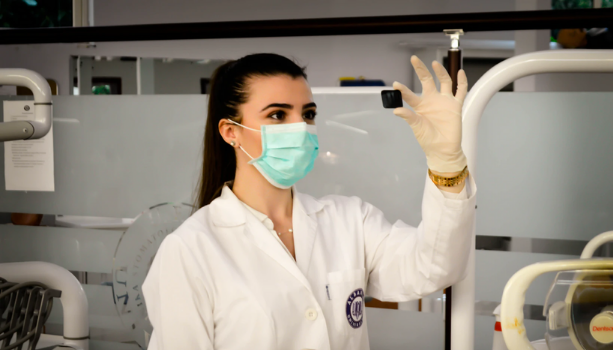Tips to Protect Your Medical Data in the Post-COVID-19 Era
Tips to Protect Your Medical Data in the Post-COVID-19 Era
COVID-19 has put the medical industry through unprecedented challenges for societies and economies this year. It has made us realize that the hospitals and institutions must prioritize their efforts in sequencing infectious diseases, the making of antibodies, and developing vaccines. On top of the arising concerns, the medical industry figured they will also need to strive harder to keep all the accumulating data safe, for the rapidly increasing number of patients and everyone else during the pandemic.
In fact, cybersecurity is what should be considered as important as medical professionals and data in the healthcare industry. Unfortunately, the budget for cybersecurity and data protection is usually under 5% at hospitals and institutions across the world, and those countries that allow data to be commercialized, most are just focusing on collecting and using medical data. Currently, the number of IoT medical devices and information systems that are becoming connected to networks is also rapidly increasing, along with big data analysis with AI technology.
Security awareness of medical data remained the same whereas the scope of data utilization has been expanding exponentially. This eventually brought attention to the safe medical data management of the hospitals. Let’s take a look at the reasons behind the arising awareness below.
1. Financial Benefits of Medical Data
According to the recent Cost of a Data Breach Report 2020 released by IBM Security and Ponemon Institute, the healthcare industry was most affected by breaches and threats and had the highest industry average cost (USD 7.13 million) this year.
It also showed that the scale of data breaches in the healthcare industry had the biggest impact, due to the values that the data holds. As explained in our previous blog, hackers attempt the attack for financial motivations. The stolen data is traded illegally or abused to gain advantages and this is the reason why medical data is most wanted amongst hackers.
2. Countless Vulnerabilities
Compared to the high value of the data, the elements that protect data are considered negligible. Various medical devices are used in the field and it’s almost impossible to protect one by one. When designing and managing medical devices, security elements are often neglected and the process ends up exposing the devices to small to big vulnerabilities.
Also, guidelines for security measures aren’t established thoroughly so it’s unclear who should be responsible for all these issues. After all, this ambiguity is what really adds on top of the countless vulnerabilities that we’re already facing.
3. Direct Impacts on Human Lives
Adopting a cybersecurity solution is definitely the most important factor in keeping medical data safe. Since all the devices can directly have an impact on human lives, this could disrupt the diagnosis system or cause malfunctions in medical devices. Therefore, if you don’t protect your data in the right way, this will lead to fatal consequences.
In fact, according to a cybersecurity experiment conducted by the U.S. Food and Drug Administration (FDA), it was possible to hack a pacemaker that was implanted in the body so that the battery runs out quicker in which exposed the heart rate to danger. The results of this experiment have sparked the awareness of cybersecurity threats in the healthcare industry worldwide.
So, can we actually be prepared for all these risks?
Let’s now take a look at 2 simples steps to building a safe and secure environment.
1. Recognize Security Issues
As mentioned above, we see a lack of knowledge and manpower in the cybersecurity field in the healthcare industry. Also, there are numerous connections such as medical devices, internal networks, medical information systems, and databases. Simply protecting individual medical devices does not guarantee any safety. You need to be aware of the vulnerabilities that the entire system has, and find the right strategy from a macro perspective.
2. Tailored Security Solutions for Medical Environments
The data generated in the sector has a higher proportion of unstructured data compared to other industries. According to the Seoul National University Medical School Report, more than 80% of (medical) big data were unstructured data. As unstructured data basically means that they’re not standardized, it makes things difficult to protect as well as to utilize them. In particular, it contains sensitive information such as medical images including X-Ray and MRI images. The system PACS (Picture Archiving and Communication System) that manages these images must be protected via a strict encryption solution.
As we’re going through a lot altogether during the pandemic, we’re finally getting to understand deeply the importance and the risks of medical data. This is mainly due to the sensitivity of the information which includes location data and other personal information. Also, the equipment used in hospitals and institutions is connected to the network which can become a target of hackers at any time. The abuse of medical data can lead to life-threatening situations that go beyond just financial gains. Now as we enter the era of Post-COVID-19, we must be ready to understand the characteristics of the industry and consider adopting effective security solutions for everyone.
Get to know more about Penta Security’s solutions that can be adopted in your hospital and institutions here today.
